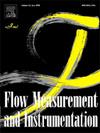多种工况下离心泵涡壳内固液两相流场的实验研究
IF 2.3
3区 工程技术
Q2 ENGINEERING, MECHANICAL
引用次数: 0
摘要
为了研究离心泵涡壳内固液两相流场的变化规律以及固体颗粒在涡壳内的分布规律,基于PIV技术,研究了不同流动条件(30 m3/h、40 m3/h、50 m3/h、60 m3/h、70 m3/h)和不同固相体积分数(1%、1.5%、2%)下涡壳的动静干涉流场。研究发现,随着固相体积分数的增加,离心泵的扬程和效率逐渐降低,在大流量条件下,固相体积分数较小时,固相的加入对泵扬程的影响很小。蜗壳中的高湍动能区主要集中在蜗壳外壁附近和蜗舌所在区域。在固相体积分数相同的情况下,涡流中的湍动能随着流速的增加而增加。涡流中的湍流动能随着固相体积分数的增加而减小。涡流中流场的绝对速度分量受流动条件的影响很大。本文章由计算机程序翻译,如有差异,请以英文原文为准。
Experimental study of solid-liquid two-phase flow field in a centrifugal pump volute under multiple working conditions
In order to study the variation law of the solid-liquid two-phase flow field in the volute of centrifugal pump and the distribution law of the solid particles in the volute, based on PIV technology, the dynamic and static interference flow field of the volute under different flow conditions (30 m3/h, 40 m3/h, 50 m3/h, 60 m3/h, 70 m3/h) and different solid phase volume fractions (1 %, 1.5 %, 2 %) is studied. It is found that with the increase of the solid phase volume fraction, the head and efficiency of the centrifugal pump gradually decrease, and the addition of the solid phase has little effect on the pump head when the solid phase volume fraction is small under the condition of the large flow. The high turbulent kinetic energy area in the volute is mainly concentrated near the outer wall of the volute and the area where the tongue is located. Under the same solid phase volume fraction, the turbulent kinetic energy in the volute increases with the increase of the flow rate. The turbulent kinetic energy in the volute decreases with the increase of the solid phase volume fraction. The absolute velocity component of the flow field in the volute is significantly affected by the flow condition.
求助全文
通过发布文献求助,成功后即可免费获取论文全文。
去求助
来源期刊

Flow Measurement and Instrumentation
工程技术-工程:机械
CiteScore
4.30
自引率
13.60%
发文量
123
审稿时长
6 months
期刊介绍:
Flow Measurement and Instrumentation is dedicated to disseminating the latest research results on all aspects of flow measurement, in both closed conduits and open channels. The design of flow measurement systems involves a wide variety of multidisciplinary activities including modelling the flow sensor, the fluid flow and the sensor/fluid interactions through the use of computation techniques; the development of advanced transducer systems and their associated signal processing and the laboratory and field assessment of the overall system under ideal and disturbed conditions.
FMI is the essential forum for critical information exchange, and contributions are particularly encouraged in the following areas of interest:
Modelling: the application of mathematical and computational modelling to the interaction of fluid dynamics with flowmeters, including flowmeter behaviour, improved flowmeter design and installation problems. Application of CAD/CAE techniques to flowmeter modelling are eligible.
Design and development: the detailed design of the flowmeter head and/or signal processing aspects of novel flowmeters. Emphasis is given to papers identifying new sensor configurations, multisensor flow measurement systems, non-intrusive flow metering techniques and the application of microelectronic techniques in smart or intelligent systems.
Calibration techniques: including descriptions of new or existing calibration facilities and techniques, calibration data from different flowmeter types, and calibration intercomparison data from different laboratories.
Installation effect data: dealing with the effects of non-ideal flow conditions on flowmeters. Papers combining a theoretical understanding of flowmeter behaviour with experimental work are particularly welcome.
 求助内容:
求助内容: 应助结果提醒方式:
应助结果提醒方式:


